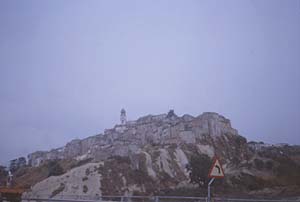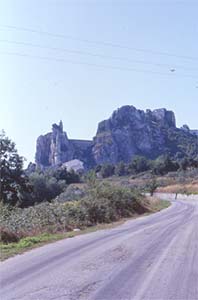The buildings that characterise
most of the towns and villages were the strong points (castle and towers), the linear defences (palisades, walls, moats), the church and the
private residences (towers, houses and huts). The urban layout was determined to a large extent by the morphology of the area, the position of the
fortifications and the location of the church. The latter was almost always located at the centre and constituted the pole of attraction for residential
buildings that tended to develop radially or in clusters. When the relationship between the castle and the church was direct, a collective space was established
that gave origin to the town square, whereas in urban settlements that were morphologically more complex (typically in mountain areas) urban aggregations tended
to develop on the slopes of the prominence on which the castle rose. For “in-line” urban settlements, i.e. those that developed along a ridge or a road, the
church still constituted a strong focal point. The development of urban settlements affected in its turn the evolution of fortified enclosing walls, which were
adapted to accommodate urban growth, increasingly isolating the area of the castle which gradually came to play the role of “defence redoubt”. Occasionally, the
urban settlement developed autonomously around the castle as a result of favourable economic conditions (market places, for example, or the presence of a
sheep-track or watercourse), taking on a singular topographical configuration. In Larino, the monastery of St. Benedict was built “infra murum et muricinum”,
between the enclosing wall and a smaller enceinte. Further changes occurred when the fortifications, no longer efficacious from a military standpoint, were
gradually transformed into comfortable residences. During the early Norman period, the pre-existing city walls and defences were re-utilised and adapted (“Questi...cominciarono
a costruire fortezze ove esistevano piccoli insediamenti” – Chr. Volt.). Later, efforts were made to build new
castles, towers and strong points, often located at the periphery of urban centres.
 Il comune informa
Il comune informa 



